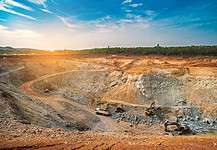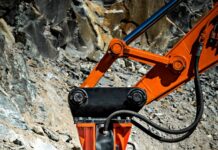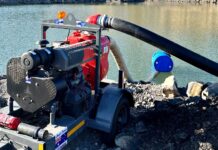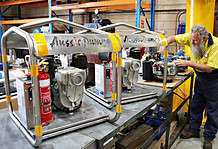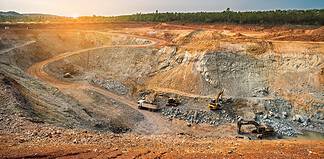Concentrating the Mine

Clear long term mega-trends have emerged that present significant challenges to mining and mineral processing.
The inexorable decline in mined ore grade for many metals is well known.
Without mining productivity improvement, this trend will naturally lead to higher energy and water use for each kilogram of metal produced.
In parallel, there is a growing market focus on decarbonising mining and metal production itself, that links to ESG imperatives and social licence to operate.
Finally, the decarbonisation of world-wide industry and energy will require a predicted huge increase in the production of key metals used for batteries and electrification, all in comparatively short time frames that seem incompatible with traditional mine development cycles.
In this environment, there is a pressing need to both improve mining productivity and adopt enabling technologies that will unlock the future required resource.
There are few technological “levers” that can provide true step-change in mining productivity but sensor-based sorting and preconcentration is one potential pathway.
Ore sorting, or the separation of low grade ore from feed ore prior to processing, is a preconcentration method used since the beginning of mining.
 In the modern context, automated sensor- based sorting holds promise for transformative outcomes.
In the modern context, automated sensor- based sorting holds promise for transformative outcomes.
Sorting can be applied to brownfield applications to mitigate ore dilution and to uplift ore grade in mill constrained operations and simultaneously provide coarse tailings.
In favourable cases, sorting can uplift feed grades by 20% or more.
Sorting can also be configured to remove penalty elements or extract high grade streams from waste stockpiles.
Sorting is also a key future enabler for greenfield development, for example, allowing economic mining of low grade deposits otherwise considered unviable, by reducing the capital intensity and environmental footprint required by the processing plant.
CSIRO has pioneered the development of Magnetic Resonance sensing technology that has enabled on-conveyor bulk sorting on primary ore conveyors at high tonnage rates at thousands of tonnes per hour, matching tonnage rates that are characteristic of much of the worlds metal production.
Bulk sorting involves the separation of pods of ore, in contrast to particle-by-particle sorting.
The sensing technology is related to Magnetic Resonance Imaging used in clinical medicine but does not require the complicated generation of large static magnetic fields.
The radio-based technique delivers highly penetrative and discriminating measurement of selected minerals.
This leads to fast and accurate measurement at typical mine cut-offs that is a vital technical pre-requisite for efficient bulk sorting.
A previously niche laboratory technique, this particular class of Magnetic Resonance has been brought to industrial relevance by CSIRO through fundamental discovery of mineral resonances and application of advanced engineering.
The on-conveyor sorting technology is now commercialised to NextOre Ltd, a joint venture between RFC Ambrian, Worley and CSIRO.
CSIRO has also recently developed a large Magnetic Resonance sensor for integration into NextOre systems for measurement of ore carried by large mine haul trucks.
This is an alternative preconcentration approach to conveyor sorting, where truck destinations may be selected based on measured ore grade.
Currently, the destination of trucks, for example, waste, stockpile or plant, is typically guided by a mine plan, which usually has limited spatial resolution such that trucks are not always correctly assigned to the correct destination.
The direct and accurate measurement of truck ore grade can reduce the misassignment rate, leading to a potentially large lift in plant feed grade.
CSIRO research for enabling sorting and selective mining is continuing.
CSIRO is developing new methods for rapid bulk iron ore sensing, where ore signatures may for example be used to rapidly detect or infer deleterious elements and minerals associated with problematic ore groups such as shale zones.
Sorting approaches based on such measurements may ultimately assist Australian producers to meet compatibility with emerging green steel production processes that generally require higher ore purity.
Magnetite sensing and sorting is also a current area of CSIRO research focus which aims to upgrade plant feed and increase the viability of processing Australia’s large magnetite resource.
Bulk sensing based on an X-ray technology called Gamma Activation Analysis is also being investigated by CSIRO in a proof of concept demonstration for direct gold sorting.
Many gold deposits are known to have high in-situ variability, making them highly amenable to bulk sorting.
The current work is directed at validating accurate measurement performance for cut-offs at sub parts-per-million gold concentrations, in short time scales.
Sorting configurations applicable to medium tonnage rates up to 1000tph are being explored.
Currently, there is no single sensing technology or “silver bullet” that can span all sorting applications.
However, technical developments by CSIRO and the industry more widely demonstrate recent progress in establishing new sorting applications.
The early miners understood the basic value of simple hand-sorting of ore.
In the modern era, the value of sorting could again emerge as a key enabler of sustainable mining.
With a combination of continued sensing developments and understanding of ore body knowledge, sorting could well find widespread application to meet the existing and future industry challenges.
by David Miljak,
Research Program Director
(Sensing and Sorting)
CSIRO Mineral Resources





